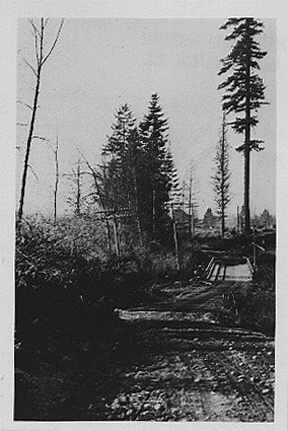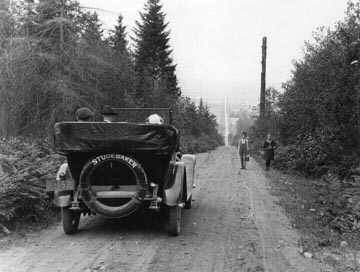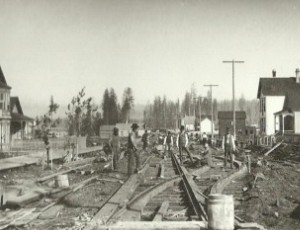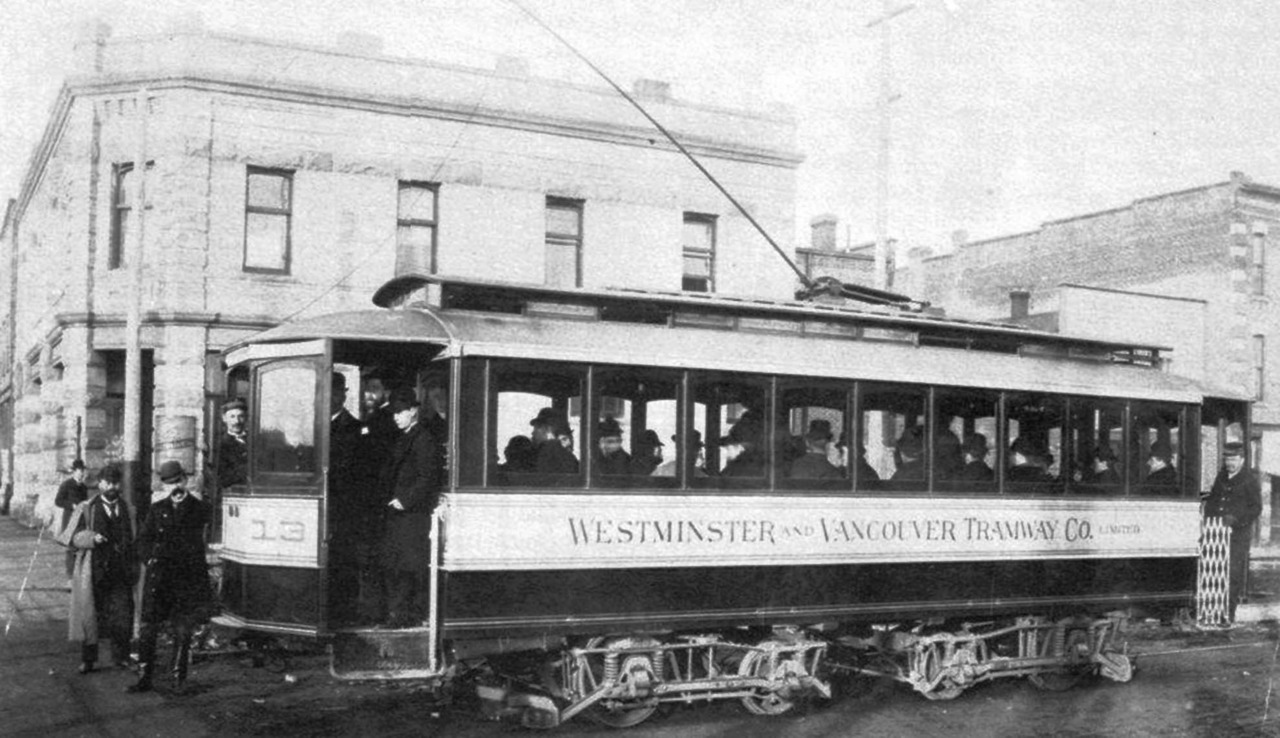

Harry's Civil Engineering Certificate
Harry's Salary Journal
The information that I'm going to give you in this essay has been derived from two personal journals. As mentioned in other parts of this biography, Harry kept what I've been calling a Salary Journal that contained a record of his income starting from 1907 and going through to his retirement in 1951. Generally, one page was dedicated to each year and one line on each page was dedicated to documenting that month's income. Occasional cryptic notes included some references to his employer, breakdowns if a monthly amount came from more than one source, conversion of foreign currency to Canadian dollars, as well as occasional references to income tax deductions, tax refunds, and amounts spent for various components of his uniform in his work post 1927.
Harry's Work Site Journal contained data that Harry entered while he was on the job. For example, I found the costs of materials that were used on what I assume were road building projects that he was hired to supervise in the early 20s. From what I can tell, most of his civil engineering career was spent supervising the building of roads (cement or bitumen asphaltic) and/or sidewalks. He may also have done some sewer work as part of the road construction. While I'm assuming that he always served as the supervisor of the work, the organization building the project varied. He did not work consistently for one employer, instead he might be hired for what looked like a term-specific project by the contractor of that project. Or, he might be employed by a municipal district or by the provincial government for a somewhat longer term.
Most of the time, Harry worked on projects in South Vancouver (east of Cambie, west of Boundary) and the area around what is now south Surrey, Cloverdale, and Langley. He also had some out-of-town work, for example in Revelstoke. In the case of Revelstoke in 1923, the city approached his employer (the Public Works Department of the provincial government) looking for a road superintendent. His immediate superior (Mr. Phillip) recommended Harry and then arranged to release him from his work for the PWD so that Harry could take the job. I assume that a similar pattern was followed in other projects away from Vancouver.
Here's a letter from the city clerk of Revelstoke to Harry on July 3rd, 1923. Interestingly, it was addressed to Mr. Wighton, Public Works Dept., Victoria, B.C. I'll have more to say on the Victoria address later. First, here's the letter.
* * * * * * * * * * * * * *
The city of Revelstoke will be laying some 13,000 sq. yds of Asphaltic-concrete pavement, with 2 and 1/2 inch base and 1 and 1/2 inch wearing surface, and Mr. Phillip has suggested you as a suitable Engineer to take charge of the work, provided you would be willing to come to Revelstoke.
We are therefore taking the liberty of asking you to superintend this work, and to ask what salary you would expect, either per day or per month. The City of course would pay your railway expenses from and to Victoria.
As soon as I hear from you I will bring the matter before the Council and advise when we would expect you to commence work, provided you would be willing to accept the position.
* * * * * * * * * * * * * *
A subsequent letter from the city on July 21st informed Harry that the city would accept his offer to perform the work at $300 per month and asked him to report to work on July 27th. Harry must have included a qualification that he would need to be released from his current job since the City Clerk indicated that We are today writing to Mr. Phillip so that you will have no difficulty in being relieved during the period which the city will require you.
Harry's civil engineer career salaries organized by year
I'm going to start this list with Harry's salary with Coughlan in 1919 so that you can see how his income increased after that.
- Income of $1,289 (12 months). Harry was employed by Coughlan Shipbuilders where he worked in an unknown capacity.
- Income of $2,071 (12 months): Harry was employed by Coughlan from January to mid April, by the BC Government of Public Works Department (PWD in April and again from August to December, and by Chilliwack Municipality from May to July. He also had income from Prince George but that time frame is uncertain. Note the big jump in pay suggesting that he was now being paid as a fully qualified civil engineer.
- Income of $2,196 (12 months): Harry worked for the PWD for the full year. From Harry's Work Site Journal, we learn that in 1921 he had supervised part of the construction of the Pacific Highway (176th street, formerly highway 15) that linked New Westminster to Bellingham. The Pacific Highway was completed in 1923. In 1921, Harry was working on the portion of the highway near Cloverdale. He also did some work in Langley Prairie (now Langley) and in Ladner.
- Income of $1,987 (12 months). Once again, Harry was employed by PWD for the entire year. His projects included work on the Ladner Trunk Road (part of Highway 10 now).
- Income of $2,465 (12 months). Harry was employed by PWD from January to mid-July, by the city of Revelstoke from mid-July to the end of September, and by Ritchie from October to the end of the year. Harry earned more in 1922 than in any other year of his employment life. His work for the Public Works Department included a concrete road in Fraser Mills (near Coquitlam, north side of the Fraser River), East Saanich paving in June and July, the Pacific Highway near Cloverdale and the Serpentine and Nicomekl Rivers, and work in Ladner. The Revelstoke work we already know about. His employment with Ritchie, a private contractor, probably included sidewalks and steps for the Boys' Industrial School (later included within Riverview Hospital), sidewalks in Point Grey, cement sidewalks for Vancouver, and some work on Trafalgar School (near King Edward in Point Grey).
- Income of $544 (4 months). Harry was employed by Ritchie from January to April. According to Harry's Salary Journal, he earned no money in the last 8 months of 1924.
- Income of $701 (9 months). According to Harry's salary journal, he did not work for the first 3 months of 1925. He was then employed by Ritchie, South Vancouver, and an organization that he abbreviated as am. Note that his average monthly income in 1925 was well below what he had earned earlier in the decade ($58 per month compared to about $170 per month). We have no information on what projects he worked on in 1925 as Harry stopped making entries in his Work Site Journal and did not resume that practice.
- Income of $1,188 (10 months). Harry was employed by Tait for one month and by South Vancouver for 9 months.
- Income of $1,231 (12 months). For the first six months of the year, Harry was employed by South Vancouver; for the last six months, he worked for the BC Electric Railway as a meter reader for its home electricity business. Harry remained with the BCER (as it evolved into what we now know as BC Hydro) until he retired in 1951. When I was writing this part of Harry's biography, I did not know why he changed careers in mid-1927. I'll reveal that reason shortly.


A typical road (North Bluff) in Surrey in 1918.
A "good" dirt road in Surrey in 1922. 168th Street, looking towards Cloverdale. Note the left side drive
The Provincial Government's Public Works Department
Using archived (and electronically searchable) copies of British Columbia’s Journals of the Legislative Assembly, I was able to get a reasonable picture of the operations of the Public Works Department in the 20s. (These journals were the precursor to Hansard which began in 1972.) The PWD was charged with funding, building, and maintaining the province's roads, streets, bridges, and wharves. Also, there was mention of them building court houses and schools. The PWD also was in charges of steamboats, ferries, and bridges as well as the maintenance of both the Parliament buildings and grounds and Government House's buildings and grounds.
The PWD had the largest current account expenditures of the government in 1929/30 (and presumably other budget years as well), in part because of the increased need for roads suitable for automobiles. The province was building the Trans-Provincial Highway as it was known then, and cities and municipalities across the province were building roads within their jurisdictions. Questions within the Legislative Assembly as they were recorded in the journals, indicated that members were interested in keeping track of how much money the PWD spent each year, and also, how that money was going to be distributed between the various electoral regions. In 1922, for example, a total of $1,326,500 was budgeted for PWD road operations with the largest amounts of money to go to Kamloops ($78K), Fort George ($75K), Cariboo ($71K), and Cranbrook ($50K). The largest cities were to receive rather paltry amounts: Nanaimo ($12K), New Westminster ($1K), South Vancouver ($8K) and no money was budgeted whatsoever to Vancouver or Victoria. The occasional reference to "50% shared funding" suggests that government funding was most easily obtained for work outside the municipality itself - e.g., roads connecting them - while funding within a municipality might be partial. I expect that where cities/municipalities had an established commercial presence, their own tax base might be expected to carry all or some of the load.
The PWD department charged with roads, streets, bridges, and wharves was organized hierarchically (of course) with a Minister and Deputy Minister at the top of the hierarchy. In 1920, the ministry's professional staff was headed by an Engineer, an assistant engineer, 8 district engineers, and 8 assistant district engineers. One of the district engineers was named Mr. P. Phillip, who entered the service in January 1917 and in 1920 was earning $230 per month. I was not able to find a list of district engineers showing their geographical responsibilities, but since Harry did a lot of PWD work in Cloverdale, Langley, and Ladner, we might assume that Mr. Phillip was in charge of the eastern and southern outlying areas of Vancouver.
Since Harry did not work continuously with PWD (other than in 1921 and 1922), one might assume that he was only one of a number of civil engineers that the PWD could call on to supervise a project. His work with the PWD would depend on how much road construction there was in the outlying areas of Vancouver and whether or not he was already engaged in some other project - PWD sponsored or privately sponsored. Keeping his contingent of available engineers available for PWD work and not hired by private concerns would be an issue for Mr. Phillip which is why he (and presumably other district engineers) would make their temporary staff available for work outside of their area. Thus, Harry was given opportunities for road superintendent duties in Saanich, Chilliwack, Prince George, and Revelstoke. With the Pacific Highway completed in 1923 and other provincial responsibilities in the outer Vancouver region drying up, it's possible that Mr. Phillip just didn't have enough work to keep his civil engineers fully employed. (Municipalities like Surrey and Delta would be responsible for road work within the municipality; the PWD took care of longer highway systems.) Harry had no work from the PWD after July 1923.
Now... why did the city of Revelstoke send Harry a letter addressed to him in Victoria and why did they offer to pay his transportation from Victoria to Revelstoke? There is nothing in our family history that would suggest that Harry lived in Victoria for any length of time. We know that he and his family returned from Scotland in 1918 and took up residence at 1374 Laurier Avenue. The inside cover of Harry's Work Site Journal has Harry's name and address - 4116 Gladstone Street. (Gladstone runs parallel to Nanaimo Street and Victoria Drive which are north/south arteries. Their house was between 24th and 25th avenue, north of John Hendry park and south of Kingsway.) Since the earliest dated entry in Harry's Work Site Journal was September 1921, we may assume that they were in the Gladstsone house by that time. I believe that the Revelstoke letter was sent to Victoria because Harry was working in East Saanich in June and July, 1923 and Revelstoke wanted him to take up work in August, 1923. Thus, the offer to pay his way from Victoria to Revelstoke was simply because Harry was temporarily living in Victoria at the time.
Ritchie
Harry's journal entry of Ritchie likely referred to a company operated by Reginald or Purves Ritchie. From the Vancouver Archives, we learn that Reginald Ritchie was born in Levis, Quebec. He worked in various eastern banks before heading west to work on the Grand Trunk Pacific Railway. After a period in Alaska (1907), he eventually settled in Vancouver in 1910, where he established the Ritchie Contracting and Supply Company with his brother, Purves. Reginald served in the Engineer Mechanical Division during World War I. After the war, he resumed his business career with his brother in Purves Ritchie Company and Ritchie Equipment Company, acting as Managing Director until 1961. In 1954, the company operated as Purves Ritchie Ltd. There is a Purves Ritchie building at 845 Burrard Street.
As best as I can determine, Harry worked for the Ritchie company in various small contracts that they had in the greater Vancouver area for such things as sidewalk construction and some work on schools. In total, he worked a total of 8 months for them during the 1923-1925 period.
The B.C. Electric Railway (BCER)


Vancouver's first streetcar line under construction; Granville, north of Pacific
Westminster-Vancouver tram, 1890s.
The B.C. Electric Railway was derived from three separate streetcar and interurban services in southwestern BC: (1) The National Electric Tramway and Lighting Company which operated the streetcar service in Victoria from Feb. 22, 1890; (2) Vancouver Electric Railway and Light Company which operated Vancouver's streetcar system from June 27, 1890; and (3) Westminster and Vancouver Tramway Company, which operated New Westminster's streetcar system from October 8, 1891, as well as the Vancouver-New Westminster interurban line (via Central Park in Burnaby) in the same year.
All three of these companies went into receivership in the 1890s as a result of a global depression. In 1895, they were amalgamated into the Consolidated Railway and Light Company, which in turn went bankrupt after a streetcar accident in Victoria (the Point Ellice Bridge Disaster) resulted in 55 deaths. The entity that took its place was the British Columbia Electric Railway Company Limited in April 1897.
The plan for Vancouver's first tram line service had been for a horse to pull a car along steel tracks. The organizers had already bought the horses and set up a stable. But, with existing street car systems elsewhere being converted to electrical operations, these original plans were abandoned in favour of a fully electrical operation. The first electric streetcar service was inaugurated in June 1890. Two lines were constructed covering a total distance of about 3 miles. By the end of 1923, Vancouver’s streetcar route spanned 62 miles.
Starting in 1905, the BCER launched a number of interurban passenger and freight services: (1) Vancouver - Steveston in 1905 (after acquiring a CPR line and electrifying it); (2) Marpole - New Westminster in 1909; (3) New Westminster - Chilliwack in 1909; (4) Vancouver - New Westminster via Burnaby Lake in 1911; (5) New Westminster - Queensborough in 1912; (6) New Westminster - Fraser Mills in 1912; and (7) Victoria to Deep Bay (now Deep Cove) in 1913. The company also operated streetcar service in North Vancouver starting in 1906.
In time, interuruban tramlines lost riders with the advent of cars and paved roads. City tram lines competed at first with jitneys (independent taxis) which first appeared in Vancouver in 1915. In 1923, bus service was introduced. Most tramlines were closed by the 1950s. In the 1950's, the Social Credit government split the BCER into two separate operations - BC Transit and BC Hydro.
To focus strictly on Vancouver's electrical infrastructure: Electricity first became available in Vancouver in 1887 from a steam plant built at the corner of Pender and Abbot. This plant provided electricity to 53 homes and 300 street lamps. In April, 1898, the BCER created the Vancouver Power Company tasked with the creation of steam plants to generate electricity. Electrical service was inaugurated in 1899 for 20 cents per kilowatt hour. The first hydro-electric generating plant serving Vancouver came on line in 1903. In 1917, the BCER started a home service department to promote the use of electrical appliances. By 1923, electric service in Vancouver cost 5 cents per kilowatt hour.
Sources
Harry's Salary Journal
Harry's Work Site Journal
Various websites, including
Vancouver Archives: http://vancouver.ca/your-government/city-of-vancouver-archives.aspx
Legislature Journals for 1920 - 1929: http://archives.leg.bc.ca/EPLibraries/leg_arc/document/ID/LibraryTest/1308840179
Surrey History: the Decline of the Railways http://www.surreyhistory.ca/railvsroad.html
Wikipedia: British Columbia Electric Railway: http://en.wikipedia.org/wiki/British_Columbia_Electric_Railway
The Transit Fan: http://spacing.ca/vancouver/2011/05/06/vancouver-turns-125-public-transit-121/
Power Pioneers: http://www.powerpioneers.com/bc_hydro_history/history/1860-1929/chronology.aspx
The British Columbia Electric Railway: http://www.exporail.org/can_rail/Canadian%20Rail_no534_2010.pdf